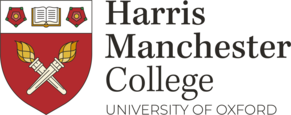Biblical milestone
Biblical milestone
Sophie Floate, our special collections cataloguer, explores some of HMC's early Bibles.
The cataloguing project of the antiquarian collection at Harris Manchester College Library has reached another milestone – the completion of the cataloguing of bibles printed before 1800. As might be expected, Harris Manchester College has a large collection of theological works including bibles. The richness of the theological collections reflect its heritage and history as a college established to educate Nonconformists who were excluded from Oxford and Cambridge due to religious tests. Here are a few notable items from the bible collection:
Novum instrumentum omne (Basel, 1516)
The first version of the New Testament to be printed in Greek (and Latin), prepared by Erasmus and printed by Johann Froben. The Complutensian polyglot bible was being prepared around the same time but Erasmus’ version was printed first. Although it was mainly translated from Greek manuscripts, some of the text was translated from the Latin Vulgate. It was a very influential work nonetheless, being the edition used by both Martin Luther and William Tyndale when they wrote their translations. This copy was bequeathed by W.J. Lamport, a Unitarian shipbuilder from Workington, who died in 1874.
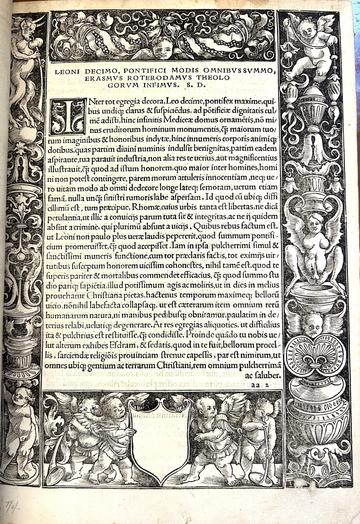
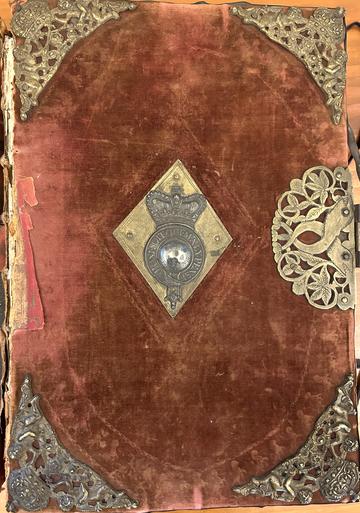
Bishops’ Bible (London, 1572)
This version of the Bible was first printed in 1568 under the authority of the Church of England but was revised and reprinted in 1572. Many within the Church of England were not happy with the so-called Geneva Bible, disliking its Presbyterian tendencies; equally, the Great Bible of 1539 was recognised as needing improvement as it was translated from the Latin vulgate, as opposed to the original languages of Hebrew, Aramaic and Greek. Led by Archbishop of Canterbury Matthew Parker, a group of bishops began translating different sections, hence the name it is often known by – “Bishops’ Bible”. It was given royal approval by Elizabeth I though she did not agree to it being the only bible authorised for use in churches. Her portrait appears on the title page (sadly missing in this copy), and the bible itself has many woodcut illustrations.
The copy here has an interesting provenance. The original owner was perhaps the poet David Wedderburn since it apparently contains seven lines of poetry in his hand. Another inscription on one of the leaves reads:
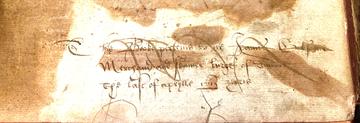
“This booke perteins to me James Gibsonne merchand and skinner in Dundie, ye last of Aprylle 1613 yeiris" [leaf Aaa1r]; and, in a later hand,"... burges of Dundie bought this buik at ye Cross of Dundie, the twentie-twa day of Junij M.i.H.vi. and threttie veiris."[leaf Ll6v].
Wedderburn was principal of Marischal College, Aberdeen and so this bible has possibly spent most of its life in Scotland, as the next traceable owner was Adam Sim of Coulter, South Lanarkshire, whose bookplate is on the verso of the cover, and the final owner, John Blackwood Greenshields, was a resident of Kerse, also in Lanarkshire. How it came to be at Harris Manchester College is unknown. The binding is red velvet with brass and silver furniture including the royal arms with the date 1578 (possibly replacing an earlier piece of metalwork?). This does not mean it was once owned by royalty – royal arms were often depicted on bindings to show allegiance.

Geneva Bible (London, 1590)
The Geneva Bible was particularly popular with Puritans and continued to be published throughout the 16th century, even after the publication of the “Bishops’ Bible” mentioned above. This copy of the Geneva Bible printed in 1590 by Christopher Barker is a good example of a ‘family bible’. Bibles were often used to record births and deaths within a family. In this example, the bible was evidently used by the children in the family for writing practice! These bibles often reveal the high infant mortality rates of earlier times, with two of the children dying aged less than one year. This bible was given to the college by H. Enfield Dowson who had studied at University College London and Manchester New College, before becoming minister of Hyde Chapel.
Vulgate Bible [Biblia insignium historiarum simulachris, cùm uenustati, tu[m] ueritati accommodis illustrata] (Paris, 1541)
A bible on a much smaller scale, printed in Paris by François Gryphius, younger brother of the more famous printer in Germany, Sebastien Gryphius. This bible is based on the text of the Estienne bibles of 1532 and 1534 but has 186 woodcut illustrations in the French mannerist style.
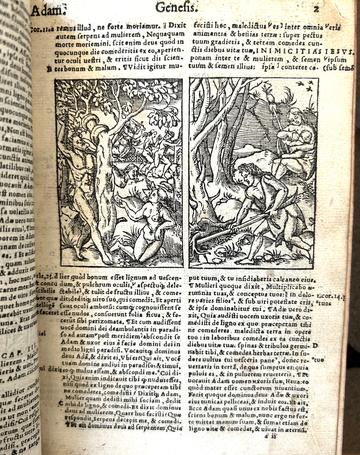
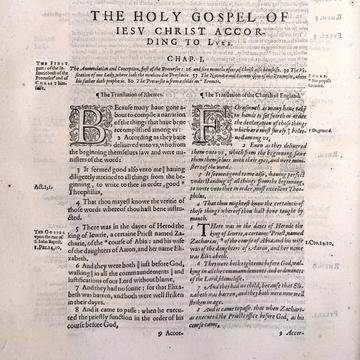
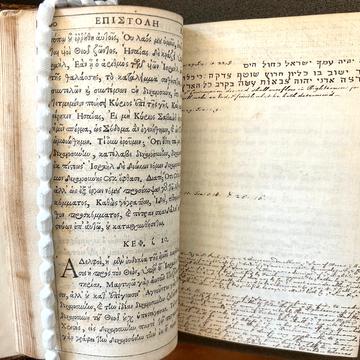
Some of the later bibles in our collections have come via the dissenting academies, many of whose libraries have ended up here.
Bible. New Testament (Rheims/Bishops’ versions) (London, 1601)
This work by William Fulke, a puritan minister and theologian, was intended to refute Catholic scholars’ claims that Protestant translations had introduced errors into the bible. His bible prints the Catholic Rheims translation in a parallel column with the Bishops’ bible version, referenced above. An unexpected result of this publication was that it became easier for English Catholics to get hold of a copy of the Rheims translation where it was officially banned. This copy was once owned by Exeter Academy, an institution for educating dissenters and whose Library was given to Manchester College in 1813.
Bible. New Testament in Greek (Cambridge, 1632)
This edition of the New Testament was the first Greek edition to be published in Cambridge by Thomas Buck in 1632; the type was borrowed from Oxford. This copy was once owned by the Reverend W. Stubbs and was subsequently given to the Warrington Academy, a leading and influential dissenting academy. The assets of Warrington Academy were shared when it was dissolved in 1786; the Library was given to Manchester Academy while the scientific equipment was bequeathed to the Hoxton Academy, London. This copy has been bound with interleaved blank pages, for manuscript notes to be written, as is the case here. These notes have been written in English, Greek, Hebrew and a form of shorthand.
